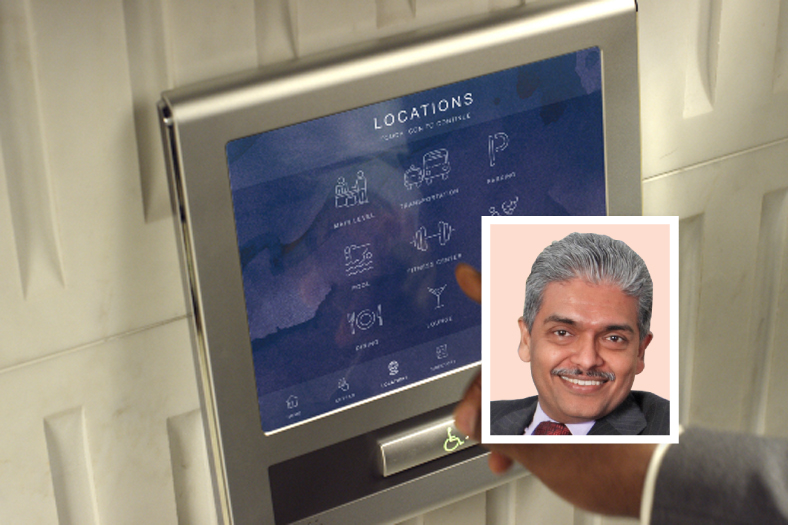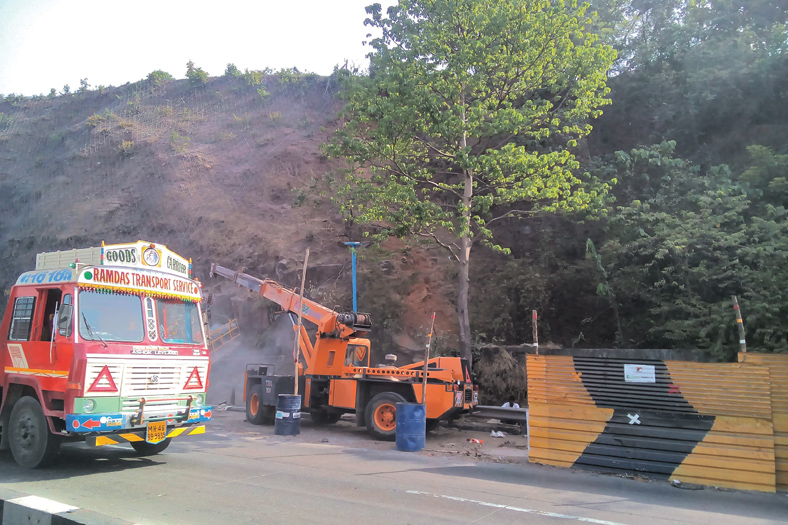Gen2 elevators to support ‘green’ growth

A smart elevator is a connected elevator capable of communicating with passengers, building managers, service staff and other building systems to improve the passenger experience.
Sebi Joseph, President, Otis India
According to industry forecast, the construction industry is expected to grow by 6-7 per cent, in line with the GDP. “While, we expect the real estate industry may face higher vacancy levels, we expect for it to ease up in the near future. Demonetisation, RERA and GST are game changers and will yield positive results in the long run. However, in the short run the industry could experience a blip. The introduction of REIT will also be another encouraging factor,” says Sebi Joseph, President, Otis India.
This expected growth in the residential segment would remain the biggest contributor to the construction industry. Low-cost and affordable housing would be a big driver. Another factor in this industry is investments in infrastructure and commercial projects. Increased focus on developing, expanding, modernizing airports, development of metro rail projects and redevelopment of railway stations, offers opportunities in the infrastructure segment in the long term.
In addition, Joseph says, “Smart connected buildings, Internet of Things (IoT) capabilities, and evolving standards of safety and quality will also be elements that benefit manufacturers with a strong appetite for investments in technology.”
Role of technology in making sustainable structures
Three hundred and forty million people, or 30 per cent of the India’s population, currently live in cities. According to a recent McKinsey report, by 2030, it is expected that cities will house 590 million people or 40 per cent of the population, and that India will have 68 cities with populations of more than 1 million.
With Prime Minister Narendra Modi’s vision and the government’s focus on Smart Cities, there is a growing need for smart and efficient technologies to support urban growth. “Future cities and developing economies hold a lot of potential for infrastructure growth and therefore, urbanisation is a major driver for the elevator segment in India,” Joseph said.
As India continues to urbanise, sustainable solutions will play a key role, and the Gen2 offers just that through its energy saving and space conservation features. Gen2 elevators, come standard with Otis’ technological breakthroughs that address the increasing demand for ‘green’ elevators. For example, the ReGen drive captures energy that would otherwise be wasted by the elevator and feeds it back into the building’s power grid. Combined, the Otis Gen2 elevator machine and the ReGen drive reduce energy consumption by 75 per cent under normal operating conditions, compared to conventional systems with non-regenerative drives.
As urbanisation drives the increased need for housing, the need for smart and efficient technologies to support growth is becoming a must. As of Nov 2017, the Indian Green Building Council (IGBC) has 4.71 bn sq.ft. of registered real estate under development as ‘Green’. This constitutes over 4,300 registered projects. “Developers and building owners are becoming environmentally conscious and thereby aim for green certifications like LEED etc. We see the Gen2 elevator supporting this growth,” Joseph observes.
Existing Otis technologies such as the CompassPlus destination management system, which constantly evaluates real-time passenger traffic to improve flow and travel time in busy mid- and high-rise buildings, could find full potential in a smart city setting.
Otis’s technology for the future
Otis has been leading the industry with a series of innovations over the years. The most key technologies in the recent past are the Gen2 and the CompassPlus. Otis is now working on developing smart elevators. A smart elevator is a connected elevator capable of communicating with passengers, building managers, service staff and other building systems to improve the passenger experience and elevator performance, especially through improved elevator maintenance.
“We think the next developments in elevator technology leverages digitalisation and centre on the passenger experience. Our latest products, which have already been released in some markets feature customisable digital displays and the ability for passengers to call the elevator from a mobile phone. In addition, our engineers are working to develop the next generation of elevators, with a target date to launch by the end of 2018 and then roll it out around the world,” informs Joseph.
This new generation will for the first time connect manufacturing to installation to service allowing us to deliver to the customer a totally different service.
Building on the theme of connectivity, Otis is transforming its service business globally to incorporate smart, connected technology that delivers proactive, quick and effective diagnostics and repair. The transformation is an investment in digital tools, mobility solutions, applications, IoT and operational excellence to enhance customer experience, accelerate business productivity and increase employee engagement.
Otis has developed and is accelerating additional efforts across the organisation to expand the use of internal service applications being developed by field teams around the world. These new tools enable company field employees to be more efficient, source information faster, develop even stronger ties with the customer and see a problem before it becomes one.
Joseph says, “Through IoT and more connectivity, we are giving our customers more transparency, more information and a streamlined process to reach Otis while maintaining and advancing the personal relationship we strive for. These solutions are being developed, tested and rolled out across the world and will be coming to India in future.”
Cookie Consent
We use cookies to personalize your experience. By continuing to visit this website you agree to our Terms & Conditions, Privacy Policy and Cookie Policy.









